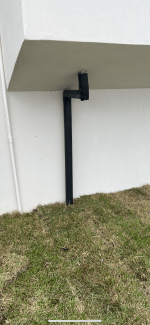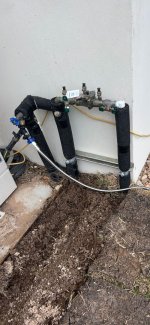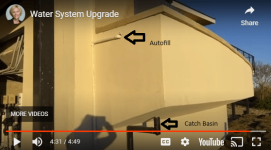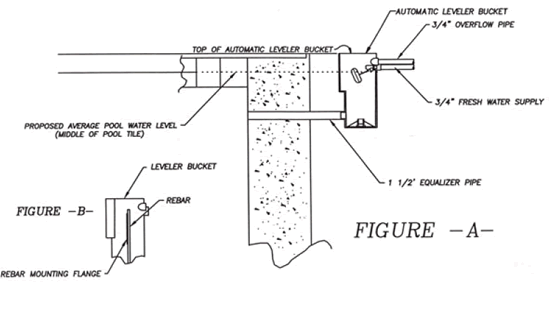Our house has a rainwater collection system that supplies all the water to the house. We use municipal water for the sprinkler system, but currently it's on the house's rain water.
To do this we need to cut one of the pipes that currently supplies the water to the pool for the auto-filler. We have a raised pool with a vanishing edge and this is the pipe to the autofiller in the overflow basin. The water supply is about 2' off ground level and the filler is about 7' from ground level.
If we cut this pipe, is water going to be draining out of the pool? Let’s assume we are keeping the float high enough to not be open/filling during this process.
Our other option is to install it near the PVB where we have multiple valves we can turn off to isolate a section of the pipe.

To do this we need to cut one of the pipes that currently supplies the water to the pool for the auto-filler. We have a raised pool with a vanishing edge and this is the pipe to the autofiller in the overflow basin. The water supply is about 2' off ground level and the filler is about 7' from ground level.
If we cut this pipe, is water going to be draining out of the pool? Let’s assume we are keeping the float high enough to not be open/filling during this process.
Our other option is to install it near the PVB where we have multiple valves we can turn off to isolate a section of the pipe.





